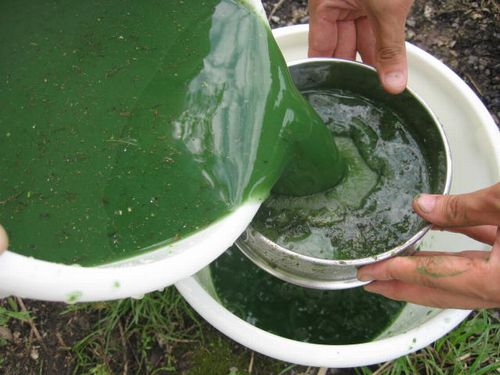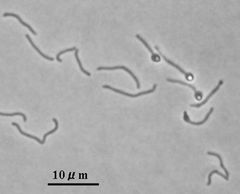updated: October 18, 2010

This field could fill your gas tank.
field image by Marek Kosmal from Fotolia.com
Biofuels such as ethanol are compounds derived from plants that can be used to fuel internal-combustion engines such as those in cars and small machinery. Creating these fuels from plants can reduce the environmental and political problems caused by a reliance on oil. Although much ethanol production, especially in the United States, comes from corn, switchgrass is a promising alternative. It is a North American native grass that can grow on marginal land without the extensive inputs that corn or sugar cane require, and it produces a much better energy yield. Making ethanol from switchgrass, though, is a challenging process.
Things You'll Need:
- Switchgrass seeds
- Field
- Harvesting machinery
- Refining tanks
- Cellulase enzymes
- Yeast
Harvest the switchgrass in the autumn after the first frost kill. The switchgrass must be mowed down and then baled. Since producing enough switchgrass to usefully refine involves large fields of the plant, the harvest must be done with farm equipment. This involves using a tractor with a mowing attachment to cut down the switchgrass, and then using a towed or self-propelled baler to gather it into bales.
Process the switchgrass for refining. The bales of harvested grass must be chopped into smaller pieces to accelerate the process of enzymatic hydrolysis (adding water and special enzymes) that will convert the cellulose in the switchgrass to sugars.
Mix the chopped switchgrass with water in a large tank and add cellulosic enzymes that can digest the cellulose into sugars that can be refined to ethanol. The major source of these enzymes is Novozymes, a Danish company that specializes in agricultural biochemistry. The cost of these enzymes is the major stumbling block to economically viable switchgrass ethanol production. To be economically viable, a refining operation needs to be able to handle 5,000 to 10,000 tons of grass each day.
Remove the processed cellulose from the water and add special yeasts, which should be available from the same supplier as the enzymes. The yeast will refine the sugars in the water into ethanol, in a process similar to wine production.
Distill the ethanol from resulting liquid by boiling the water off and collecting the ethanol in a separate tank. To distill pure ethanol, benzene or cyclohexane must be added to the mixture. These chemicals bind to and remove the last small bits of water from the distillate. Some processing operations use special microscopic filters instead. If trying this on your own, always check local regulations on home alcohol distillation, as ethanol is a type of alcohol.
Tips /Warnings
- Producing economically viable ethanol from switchgrass involves large planted areas and large refineries. Doing this at home will likely produce quantities too small to be useful, but can be an interesting experiment.
- Governments and private companies are researching cheaper and better enzymes to refine switchgrass; until a better one is found, commercial production beyond test plants is unlikely.
References
Harvest Clean Energy: Creating Cellulosic Ethanol: Spinning Straw into Fuel
Wired Magazine: Cellulosic Ethanol: One Molecule Could Cure Our Addiction to Oil
Iowa Switchgrass: Harvesting
Home Distillation of Alcohol: Theory
Read more: How to Convert Switchgrass to Ethanol | eHow.com http://www.ehow.com/how_7356509_convert-switchgrass-ethanol.html#ixzz14tPAHVqB



